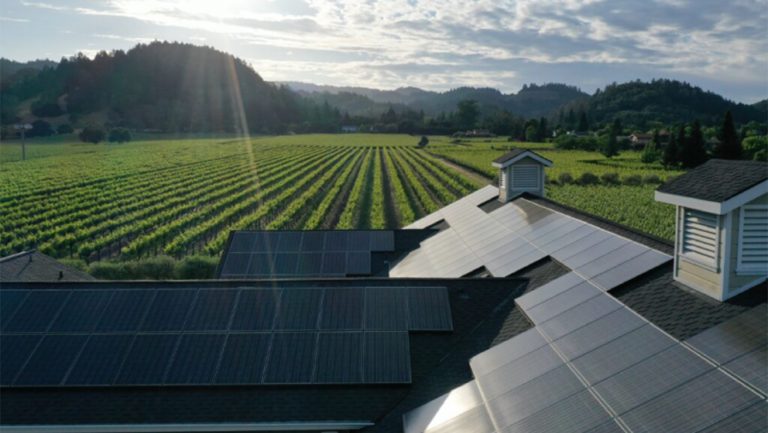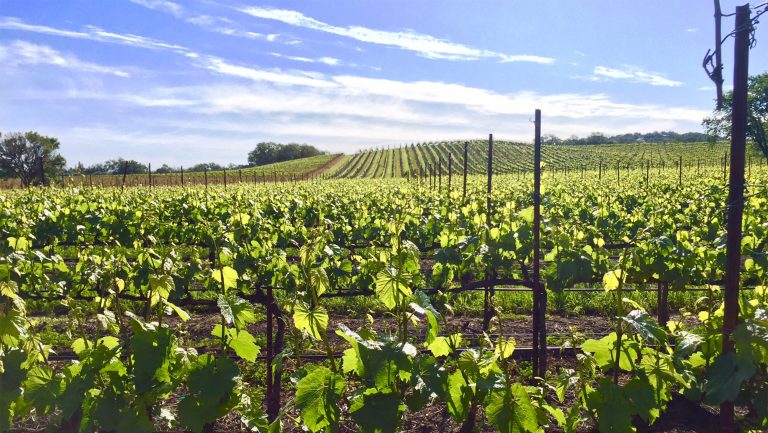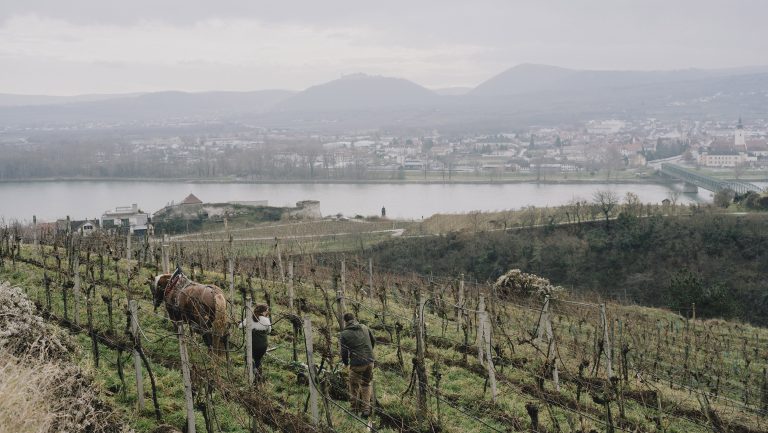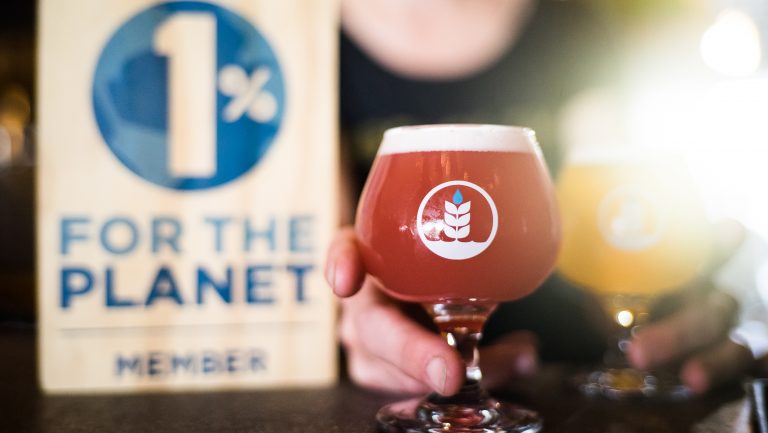In June at Charles Krug Winery, Napa Green held its annual symposium, Napa Thrives—now called Napa Rise. Talks covered regenerative agriculture, greenhouse gas inventories, diversity, equity, and inclusion, and other topics pertinent to sustainability in the wine industry.
The culminating panel, “Navigating the Evolving Financial Landscape,” dealt with ESG reporting. Standing for environmental, social, and governance, ESG is the financial and investment sectors’ term for sustainability in business. According to experts, it is becoming a global standard to which the wine industry will need to comply.
Given proposed European and American regulations, “every public company in the world as of 2024 will have to account for all of their suppliers’ ESG scores,” declared panelist Elisa Turner, the founder and CEO of the consultancy Impakt IQ. “My guess is 90 percent of you aren’t going to escape this.”

Don’t miss the latest drinks industry news and insights. Sign up for our award-winning newsletters and get insider intel, resources, and trends delivered to your inbox every week.
The panel left attendees—many of which are already working on the environmental, social, and governance issues that make their businesses sustainable—scratching their heads, reports Napa Green cofounder Anna Brittain. “There were expressions of, ‘What, seriously? This is happening?’” she recalls. “There was reluctance to move into it.”
Though few industry members, including those at the symposium, work for publicly held wine companies, ESG is indeed poised to impact wine businesses in the coming years—both public and private. New regulations mean that ESG scores could impact large retailers’ stocking decisions or a winery’s ability to secure bank loans. SevenFifty Daily spoke to experts in the ESG space to learn what this means for wine businesses going forward.
Setting Sustainability Standards
“ESG is a term used primarily by the financial sector for what we broadly call sustainability,” explains James Streeter, the chairman of the advisory board for the global coalition Sustainable Wine Roundtable (SWR). According to several accounts, the acronym ESG first appeared in the 2004 United Nations Global Compact report “Who Cares Wins: Connecting Financial Markets to a Changing World,” meant to guide investors on environmental, social, and governance considerations in investment decisions. The paper connected a company’s performance in areas like human rights, emissions, and anti-corruption to its bottom line.
“Companies that perform better with regard to these issues can increase shareholder value by, for example, properly managing risks, anticipating regulatory action, or accessing new markets, while at the same time contributing to the sustainable development of the societies in which they operate. Moreover, these issues can have a strong impact on reputation and brands, an increasingly important part of company value,” read the executive summary.

The argument was that sustainability is good for such businesses, and thus good for those who invest in and finance them. Companies that address ESG concerns “tend to outperform those in the underlying market,” SWR’s head of research Peter Stanbury, Ph.D. explains. “These are companies who are proactively managing challenges as they emerge rather than reacting. And that’s probably indicative of a management team that is better quality and lower risk as an investment.”
In establishing the UN’s Principles of Responsible Investment (PRI), the world’s largest firms pledged to embrace ESG in 2006. Today, well over 5,000 financial entities have signed onto the principles. A 2022 study by the Harvard Law School Forum on Corporate Governance found that the proportion of global investors adopting ESG is now at 89 percent, concluding that “investors largely agree that investment returns and sustainable impact go hand in hand.”
With the spread of ESG investing have come accusations of greenwashing, lack of accountability, unfairness, and a “woke” war on fossil fuels. One problem has been disagreement on what ESG encompasses and how to report it. But global standardization is gaining fast, a trend that Julien Gervreau, the director of sustainability implementation and climate action planning for the accounting firm Sensiba San Filippo and the former VP of sustainability for Jackson Family Wines, calls “heartening.” In 2011, the nonprofit Sustainability Accounting Standards Board (SASB) “established sustainability standards for 77 different industries, building out a suite of ESG metrics that, depending on the industry you’re in, meet a materiality threshold,” explains Gervreau.
In 2022, SASB was folded into the International Sustainability Standards Board (ISSB), whose stated mission is “to develop a comprehensive global baseline of sustainability-related disclosure standards that provide investors and other capital market participants with information about companies’ sustainability-related risks and opportunities to help them make informed decisions.”
With all this activity around codification of ESG, “I’ve been noting it’s not the Wild West anymore,” says Brittain. “Even people who have had to report ESG have up until now been able to interpret it as they want, but now this needs to meet the international standards.”
How ESG Impacts the Wine World
When Gervreau talks about “materiality,” he means the ESG information most likely to impact the financial performance of a typical company within a particular industry. According to the SASB breakdown, says Gervreau, there are five industry sectors that most wine companies fall under: alcoholic beverages, agricultural products, retailers and distributors, ecommerce, and advertising and marketing. SASB has given each a different set of disclosure standards for such ESG topics as water use, greenhouse gas emissions, and social issues.
Consultancies like Impakt IQ help wineries sift through the maze of metrics. “My mission is to benchmark sustainable business practices to profitability and brand value,” says Turner. Her proprietary tool, which she dubs “QuickBooks for ESG,” uses questionnaires to assess a company’s performance against global standards and create “a customized matrix that has every single material issue” and can be third-party audited.

Up until now, ESG has only applied to publicly traded companies, which legally must disclose risks in their annual reports to stockholders. Such disclosures can help sustainability-oriented companies, such as Treasury Wine Estates (TWE), owners of Stags’ Leap, Penfolds, and other brands, focus on areas for improvement. “In fiscal year 2021, we assessed the ESG issues, risks, and opportunities of greatest significance to our stakeholders and company,” says Emily Kern, the regional environmental sustainability compliance manager at Treasury Americas. “We identified eight medium and high-priority topics, which are broken out into three focus areas and make up the pillars of our sustainability strategy.” These include building a resilient business through climate risk mitigation, greenhouse gas reduction, and water stewardship; fostering healthy, inclusive communities; and producing sustainable wine in farming and production, packaging, and the supply chain.
That final piece of the puzzle—the supply chain—is ever more important to the ESG discussion. Yet, for many wine companies, it remains a black hole. Do you grow your grapes or buy them? Do you have code of conduct for your suppliers? Do they have to report to you on environmental and human rights issues? “If a big, well-known brand is buying from someone who has labor issues, and that gets out, their brand value tanks. They’re blacklisted,” says Turner.
The supply side of the value chain is where the lion’s share of wineries fit in. Most will never have stockholders—yet, as ESG standardizes, regulatory agencies have gotten involved. In February 2022, the European Commission adopted a proposal for corporate sustainability due diligence. According to the directive, large corporations operating in the EU will be responsible for “identifying, bringing to an end, preventing, mitigating, and accounting for negative human rights and environmental impacts in the company’s own operations, their subsidiaries, and their value chains.” Corporations will be accountable, not only for their own ESG, but for that of suppliers, transporters, and the like—known as their Scope 3, or supply chain emissions. For retailers like Costco and Whole Foods, that includes producers that supply the wine on their shelves.
Similarly, in the U.S., the Securities and Exchange Commission (SEC) has proposed rules to make public companies disclose climate risks impacting business. For larger companies, that includes Scope 3 emissions, “if such emissions were material to investors or if the company had made a commitment that included reference to Scope 3 emissions,” said chairman Gary Gensler. The SEC is also considering greater oversight of human capital disclosures, such as treatment of the workforce, including diversity, human rights, and other social concerns, throughout the value chain.
“ESG has historically been for the big boys, and now, as more publicly traded companies are starting to have to comply, they are increasingly asking those questions down the supply chain, and that’s where it intersects with the broader wine industry,” says Gervreau.
“From a regulatory perspective this is no longer about climate change; it’s about managing risk,” says Turner. “There are climate events impacting our global economy, insurance, and everything. The train’s left the station.”
Interest in ESG is heating up at the state level, too. This past January, the California State Senate passed SB260, the Climate Corporate Accountability Act, which would have required any company with annual earnings over $1 billion to disclose all scopes of its emissions. It would have put much of the state’s wine industry on the hook. Though the bill died in the assembly, its coauthor, state senator Scott Weiner, vowed to keep fighting.
Doesn’t Certification Cover All This?
Lodi Rules, Sustainability In Practice, Certified California Sustainable Winegrowing (CCSW)—in recent years, sustainability certifications have been all the rage in the wine world. Many producers have acquired one or more. Isn’t that enough to prove they’re not an ESG risk to a buyer? No, says SWR’s Dr. Stanbury, because the number of competing and overlapping certifications makes determining financial risk nearly impossible.

For a global company like Treasury, which is a founding member of SWR, “navigating the varied ESG standards, certifications, and landscapes across the geographies in which we do business is complex,” says Kern. “From vineyard sustainability certifications to recycling standards, differences abound.”
Stanbury’s team is working to “read across all the sustainability standards, sort of like Google Translate,” and establish their commonalities at a macro level. “If we come up with something which is the Rosetta Stone of sustainability standards, then why wouldn’t the ESG community not use that as a baseline because we’ve done the heavy lifting?” He hopes to make it easier “for people in vineyards with muddy boots who are getting asked these questions by suits in offices.”
“It’s a great start to be certified through CCSW or Napa Green,” says Gervreau, though “it can’t necessarily be a stand-in for a broader ESG strategy, which is more comprehensive than any certification. As these global ESG frameworks become formalized and harmonized and are more closely adopted by the investment community, it’s an opportunity for the certification programs to make sure they align with ESG.”
How ESG Scores Relate to Financial Success
Ultimately, ESG comes down to dollars and cents, and that’s where the winemakers with the muddy boots meet the suits in the C-suite. “ESG is integral to TWE because it is essential to doing business in a changing world. At the highest level, the future of our wines depends on the state of the environment in which we grow grapes. To make excellent products, we must be stewards of our environment and our communities,” says Kern. “As a publicly traded company, we are also beholden to our shareholders and investors. Sustainability remains firmly on their agendas throughout significant events such as the global pandemic, floods in Australia, and drought in California, and it is our responsibility to address and act on the issues they care about.”
As lenders and granting agencies adopt it as a benchmark, ESG reporting can translate into financing. In December 2021, TWE garnered the first Sustainability Linked Loan ever given to a winery, and one of the largest to date in the Asia-Pacific region. At AUD$1.4 billion, it is a hefty precedent.
“If you’re a private wine company, why care? First, your customers are going to start asking for it. The other reason is banks are increasingly applying ESG screens. For companies looking for capital, to go public, or to sell out to larger organizations, these screens are increasingly important,” says Gervreau.
“Most wineries don’t have a clue,” warns Turner. “They don’t understand material issues that fall under ESG that can affect valuation. ESG scores are being integrated with credit scores, and they will surface higher risk than a financial statement shows.”
For wineries that export, “these lenses are increasingly used to evaluate U.S. wine in other places outside the U.S.,” says Gervreau. “We are behind the European system, and that could hamper our ability to market and sell wines in Europe in particular.”
Stanbury agrees: “In a few years, ESG may not just be about finance in equity markets but about access to consumer markets.” It’s not just a matter of scores on paper; ESG is about tangibles. “It’s not impossible that unless you’re sold in lighter weight bottles, the monopolies will say, ‘We won’t stock you,’ particularly in Scandinavia,” he adds.
For producers who wrap their heads around ESG, there’s money on the table. “With the Build Back Better bill, grants are available to improve facilities from emissions and environmental perspectives,” says Turner. “But you have to have the ESG in place to apply for grants that will be linked to progress against your targets.”

ESG as a Tool of Environmental Resiliency
At its most transparent, ESG can help a wine company get more sustainable and successful. “Our IPO did not change the way we think about ESG but formalized our reporting of it,” says Sean Sullivan, the executive vice president and chief administrative officer and general counsel of The Duckhorn Portfolio, which went public in 2021. “Being at the forefront of climate risk management and corporate responsibility is an ongoing journey, however. The baselines we establish will guide us as we strive to be good stewards of the land, champions of our employees, and positive agents of change for our industry.”
Gervreau encourages wineries to look at ESG as a planning and resiliency tool. It helps even smaller wineries “evaluate risk and opportunity to build a more resilient organization from the ground up,” he says. “It’s about using these frameworks to make leaner, greener, meaner organizations.”
Stanbury concurs: “There are some people saying just the process of monitoring these things makes efficiencies.” He recalls a representative from one of SWR’s larger member wineries mentioning that their ESG assessment revealed inconsistencies in energy use, water management, and profitability between properties. “It had to do with the vineyard setting but also one property was managed better than the others.” ESG findings like that help a wine company identify and share best practices across its portfolio.
In the broader context, ESG reporting shows the wine world where the economy is headed and where risks and opportunities are. And it raises the positive profile of the industry as a whole. “It leads to increased consumer awareness, increased opportunities for wineries to tell their stories, and hopefully increased sustainability performance. It benefits the health of the industry in the long term,” says Kern. But she emphasizes that “to make meaningful impacts, we must all work together. Existing industry groups are fostering the collaboration needed to address these challenges and serving as an opportunity for everyone across the industry to get involved.”
One of those groups is Napa Green. Brittain is already planning round two of “Navigating the Evolving Financial Landscape.” “I really do think there’s an overall lack of awareness about ESG, so I am going to try to build that again into the next symposium in April,” she says. “We will keep bringing this up, so we can get ahead of it now rather than being reactionary.”

Dispatch
Sign up for our award-winning newsletter
Don’t miss the latest drinks industry news and insights—delivered to your inbox every week.
Betsy Andrews is an award-winning journalist and poet. Her latest book is Crowded. Her writing can be found at betsyandrews.contently.com.








